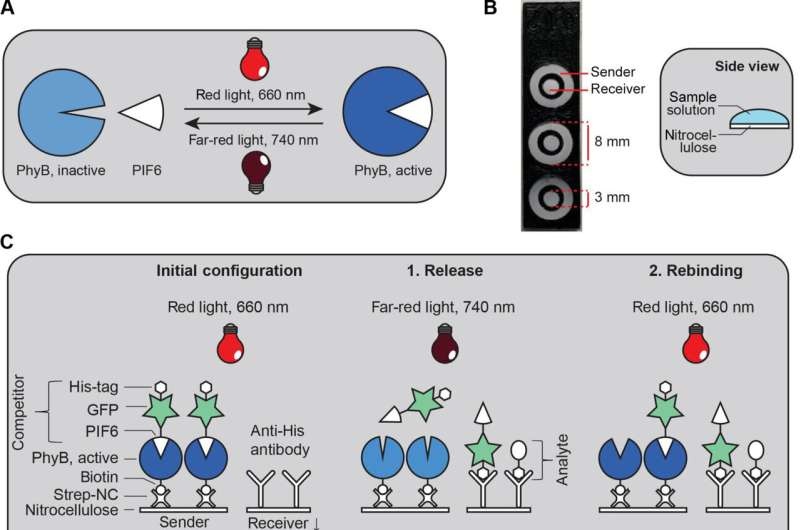Discover how light-controlled bioassays are revolutionizing medical diagnostics, offering a more accessible and cost-effective solution for disease detection. Inspired by nature’s principles, these innovative technologies are paving the way for point-of-care testing that can be easily controlled and read using smartphones.

Nature’s Inspiration for Medical Breakthroughs
From Velcro to solar cells, many technological innovations have been inspired by the natural world. In the field of medical diagnostics, researchers are drawing inspiration from biological principles to develop new testing methods that are more efficient and accessible.
The research team from the University of Freiburg and the INM—Leibniz Institute for New Materials in Saarbrücken has taken this approach, creating what they call ‘OptoAssays‘ – bioassays that use simple light-emitting diodes (LEDs) instead of complex mechanical pumps to control the movement of biomolecules. These OptoAssays mimic the behavior of biological cells and utilize their genetic programming to provide accurate test results.
Revolutionizing Diagnostic Testing with Light Control
Conventional diagnostic tests, such as SARS-CoV-2 rapid tests and pregnancy tests, often rely on lateral flow assays – a method where the sideways flow of a reagent leads to a displayed result. While this approach works well for simple tests, it is not suitable for more complex analyses that require bidirectional control of liquids.
Currently, these multistep assays depend on expensive and wear-prone mechanical pumps to repeatedly flush out unbound molecules and ensure that only the target particles remain attached to the detection antibodies. The researchers at the University of Freiburg and the INM have found a solution to this problem by replacing the mechanical pumps with simple and affordable LEDs.
The OptoAssays they’ve developed allow for the bidirectional, light-induced movement of biomolecules and the reading of test results without the need for additional mechanical washing steps. This innovative approach not only mimics natural biological processes but also utilizes sustainable, natural materials in place of the typically used mechanical components.
Conclusion
The development of light-controlled bioassays, or OptoAssays, represents a significant breakthrough in medical diagnostics. By drawing inspiration from nature and leveraging the power of light, researchers have created a more accessible and cost-effective solution for disease detection. These innovative technologies have the potential to revolutionize point-of-care testing, enabling straightforward and accurate analyses directly on-site, even in resource-limited settings. The future of medical diagnostics is now brighter than ever, with the promise of improved healthcare outcomes and increased accessibility for communities around the world.
